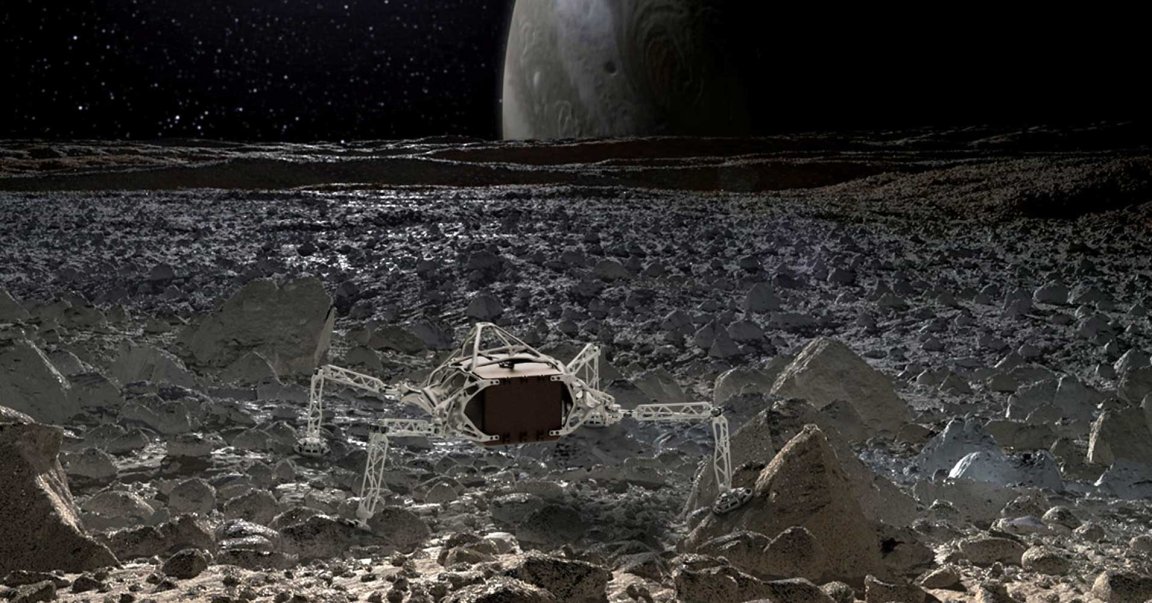
AI for ET
Artificial intelligence could help in our hunt for extraterrestrial intelligence.
The moons of Jupiter and Saturn are two of our most promising leads in the hunt for alien life, but they‘re hundreds of millions of miles from Earth. Given the high cost of transporting payloads in space, NASA is currently in search of anything that could help decrease the weight of exploratory landers — and AI is proving it might be up to the task.
Spider Lander
On Tuesday, engineers from NASA’s Jet Propulsion Laboratory and software company Autodesk unveiled a lander designed to explore environments like those of Jupiter and Saturn’s moons.
The team developed the lander, which looks a bit like a spider that’s missing half its legs, using a technique known as generative design. First they gave an AI-powered software program specific design constraints, such as particular materials it could work with and expected environmental conditions. Then the program outputted lander designs to fit those constraints.
After about six weeks of tweaking the AI’s suggestions, the team settled on the spider-like lander design, which it then constructed using a trio of manufacturing methods, including 3D printing.

Shedding Pounds
NASA spends an average of $10,772 to send a single pound of payload into Earth’s orbit, and that cost increases with the distance it travels from Earth.
As Autodesk’s senior director of industry research Mark Davis told The Verge, NASA was adamant that the Autodesk and JPL team focus on mass reduction while designing its lander. Ultimately, the design they picked weighs just 176 pounds — about 35 percent less than the baseline design given to it by NASA.
While Davis says the AutoDesk lander won’t actually leave Earth, it serves as an intriguing example of how AI could help us hunt for alien life our solar system and beyond.
READ MORE: AI Software Helped NASA Dream up This Spider-Like Interplanetary Lander [The Verge]
More on Saturn’s moons: One of Saturn’s Moons Has Everything Needed to Host Life